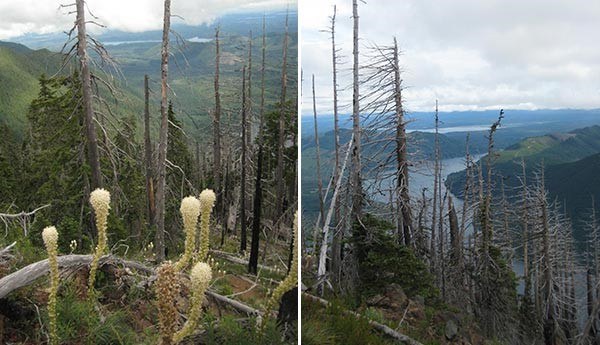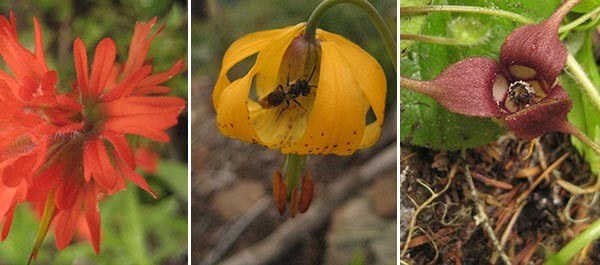
With its steep and rugged trail systems and its proximity to Olympia, the Mt. Skokomish Wilderness is a great training ground for the locals. It's not just for locals though - many of its mountains and trails are well worth traveling to visit.
The Mt. Skokomish Wilderness is home to such trails as Mildred Lakes, Putvin Trail, Rose, and Ellinor. The more experienced can summit peaks such as Washington, Stone, Pershing, Jefferson, Tran Spire, Skokomish, Lincoln, Cruiser, and Sawtooth Ridge. The only major stream flowing through the wilderness is the Hamma Hamma River, which gathers its waters from Mildred Lakes.
All trails within the Wilderness are rated strenuous because they are extremely steep and are very hard on the legs coming down. Use caution if you have problems with your knees. Definitely bring hiking poles, wear hiking footwear with good traction, and use caution during inclement weather as the trails can be slick.
All that being said, Mt. Rose is a "must do" in the Olympic National Forest. Many individuals visit year round to use Mt. Rose as a training tool to get into better shape. With it being so close to Olympia, it's an easy choice for an after work workout. The trail is a mere 6.4 miles round-trip, with an elevation gain of 3,500 ft over 3.2 miles, making this trail quite doable before the sun goes down.
Mt. Rose acquired its name from one of the first people to settle Hood Canal and the Lake Cushman area in 1885. Alfred A. Rose and his family farmed 150 acres, up until the time he apparently grew bored of farming and decided to become a hunter and trapper. He became quite well known in the area as one of "the best shots." Sadly, his fame didn't last long, after visiting Seattle in 1889, he contracted smallpox and subsequently died from the illness. His family was forced to move - leaving all their possessions, which were promptly burnt as no one wanted the disease to spread along the canal. Alfred A. Rose left behind a mountain with his name, a testament to the toughness of the pioneer family. The trail lives up to being a tough one to conquer, but it is doable - one step at a time.
When heading up the trail look for native rhododendrons, Indian Paintbrush, Salal, Oregon Grape, Foam Flower, and Wild Ginger. At the top of the ridge you will find fields of Bear Grass, Sitka Valerian, False Hellebore, Avalanche Lilies, Tiger Lilies, and more.
 From left to right: Indian Paintbrush, Tiger Lily, and Wild Ginger Photos: Regina Robinson
From left to right: Indian Paintbrush, Tiger Lily, and Wild Ginger Photos: Regina Robinson
Stands of old-growth occur on the lower slopes consisting primarily of Douglas-fir, Western Hemlock, and Western Red Cedar. At the upper elevations, subalpine Fir and Western White Pine give way to rock and scattered vegetation commonly found in the subalpine and alpine zones.
know before you go
Carrying an ice axe (when snow is present), gps with map & compass, and the ten essentials is highly recommended. I also carry 3 liters of water as the streams are often dry in late summer.
Although the trail is marked with orange diamonds, hikers should still use caution: bring a good map and be familiar with the trail before attempting it in the snow and fog. Many hikers have gotten turned around and lost on this short trail.
Bonus tip
A dip in the cold Lake Cushman is a wonderful way to get cooled down and refreshed after this strenuous hike.
Resources
- Directions
- Mt Rose Olympic National Forest Map
- Archived article about Lake Cushman from the Shelton Mason County Journal
- The Early Settlement of Lake Cushman
- "Hardwork and Shattered Dreams: Settlement on the Peninsula" from the Olympic National Park Historic Research Study
- Parking pass: None required
Author Regina Robinson explores a new topic each month in her "Did You Know?" series, which comes out in the Olympia Branch Newsletter. To see more of her recent posts, visit the Olympia Branch blog page.
 Regina Robinson
Regina Robinson